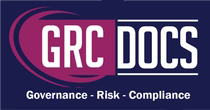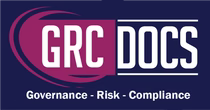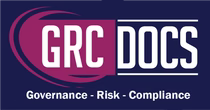NIST Vulnerability Management Policy Template
Introduction
A NIST Vulnerability Management Policy is a formal document that outlines the procedures and guidelines for identifying, assessing, and remediating vulnerabilities in an organization's IT infrastructure. It establishes a systematic approach to mitigate security weaknesses that could be exploited by malicious actors to compromise the confidentiality, integrity, and availability of data and systems.

Importance Of A Vulnerability Management Policy
One of the key reasons why a it is essential is that it allows organizations to stay ahead of potential cyber threats. By regularly scanning their systems for vulnerabilities, businesses can identify and patch security weaknesses before they are exploited by hackers. This proactive approach minimizes the risk of a data breach or cyber attack, safeguarding the organization's reputation and preventing potentially devastating financial losses.
Furthermore, it helps organizations comply with industry regulations and data protection laws. Many regulatory bodies, such as GDPR in Europe and HIPAA in the United States, require businesses to maintain a certain level of security to protect sensitive information. By implementing a comprehensive Vulnerability Management Policy, organizations can demonstrate their commitment to data security and compliance, avoiding hefty fines and legal consequences.
In addition to enhancing cybersecurity and regulatory compliance, a NIST Vulnerability Management Policy can also lead to cost savings for businesses. By identifying and addressing security vulnerabilities proactively, organizations can avoid the potentially exorbitant costs associated with a data breach. The financial impact of a breach can include legal fees, regulatory fines, loss of revenue, and damage to the brand's reputation. By investing in a Vulnerability Management Policy, organizations can reduce the likelihood of a breach and the subsequent financial repercussions.
Key Components Of An Effective Vulnerability Management Policy
1. Regular Vulnerability Assessments: One of the fundamental components of a policy is conducting regular vulnerability assessments. This involves scanning the organization's network and systems to identify potential weaknesses and security gaps. By performing these assessments on a scheduled basis, organizations can stay ahead of emerging threats and address vulnerabilities before they can be exploited by malicious actors.
2. Prioritization Of Vulnerabilities: Not all vulnerabilities are created equal, and not all pose the same level of risk to an organization. A critical aspect of an effective Vulnerability Management Policy is the ability to prioritize vulnerabilities based on their severity and potential impact on the organization. This helps IT teams focus their efforts on addressing the most critical vulnerabilities first, ensuring that limited resources are allocated efficiently.
3. Patch Management: Patching software vulnerabilities is a critical aspect of vulnerability management. An effective policy should outline procedures for timely patch management, including testing patches before deployment to prevent system disruptions. By staying up-to-date with patching, organizations can close security gaps and prevent attackers from exploiting known vulnerabilities.
4. Incident Response Plan: Despite best efforts to prevent security breaches, incidents can still occur. A comprehensive policy should include an incident response plan that outlines the steps to be taken in the event of a security breach. This plan should define roles and responsibilities, provide a framework for containing and mitigating the breach, and outline procedures for reporting and communicating with stakeholders.
5. Employee Training and Awareness: Employees are often the weakest link in an organization's security posture. A robust Vulnerability Management Policy should include employee training and awareness programs to educate staff on best practices for recognizing and reporting potential security threats. By fostering a culture of security awareness, organizations can empower employees to play an active role in safeguarding the organization's sensitive information.

Benefits of a Vulnerability Management Policy
- Improved Security Posture: It helps organizations proactively identify and address vulnerabilities in their systems before they can be exploited by attackers. By regularly scanning systems for vulnerabilities, organizations can stay on top of potential security risks and take steps to mitigate them effectively.
- Enhanced Compliance: Many industries have strict regulations and compliance requirements related to cybersecurity. Implementing a Vulnerability Management NIST Policy can help organizations meet these requirements by demonstrating a commitment to maintaining a secure environment and protecting sensitive data.
- Reduced Risk of Data Breaches: By identifying and patching vulnerabilities in a timely manner, organizations can significantly reduce the risk of data breaches and cyber attacks. This helps minimize the attack surface and fortify the organization's defenses against potential threats.
- Cost Savings: Data breaches and cyber attacks can have significant financial implications for organizations, including remediation costs, legal fees, and reputational damage. By proactively managing vulnerabilities, organizations can avoid these costly consequences and save money in the long run.
- Increased Productivity: Dealing with a security breach can be time-consuming and disruptive to business operations. By proactively managing vulnerabilities, organizations can avoid the downtime and productivity loss associated with cyber attacks, allowing employees to focus on their core tasks.
Key Objectives
- Maintain a baseline of secure system configurations
- Detect vulnerabilities earlier through scheduled vulnerability scanning
- Reduce exploitation impact by mitigating vulnerabilities quickly
- Align with industry best practices outlined in NIST frameworks
Scope
This policy applies to all IT assets, including software updates, network devices, servers, and applications. It covers potential weaknesses that may introduce high risks to business operations and covers threats that include but are not limited to misconfigurations, outdated software, and known CVEs.
Vulnerability Identification and Assessment
- Use automated scanners and manual checks to detect vulnerabilities
- Track vendor security advisories and threat intelligence feeds
- Apply a standardized scoring system such as CVSS to evaluate severity
- Prioritize high risks for immediate remediation efforts
Mitigation and Remediation
- Deploy timely software updates and patches based on risk levels
- Implement compensating controls when immediate fixes are not available
- Document actions taken for accountability and compliance
Monitoring and Reporting
- Perform recurring vulnerability scanning to ensure continuous security
- Report remediation metrics to management for review and decision-making
- Update mitigation strategies as technology and threats evolve
A solid NIST Vulnerability Management Policy Template is essential for safeguarding digital systems and maintaining trust in organizational cybersecurity. It helps teams stay compliant, limit damage, and keep business operations resilient by making sure vulnerabilities are identified early and resolved efficiently.
Conclusion
Having a comprehensive NIST Vulnerability Management Policy in place is crucial for any organization looking to safeguard its sensitive data and systems from cyber threats. By implementing a clear policy that outlines the identification, assessment, and remediation of vulnerabilities, businesses can mitigate risks and ensure a proactive approach to security. It is imperative for organizations to prioritize the development and enforcement of a robust Vulnerability Management NIST Policy to protect their assets effectively.





